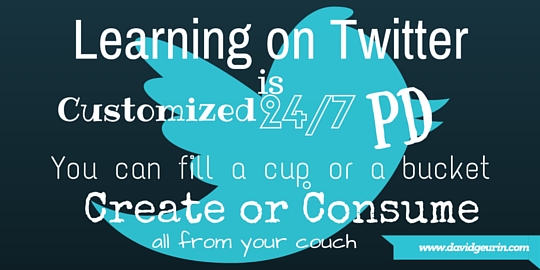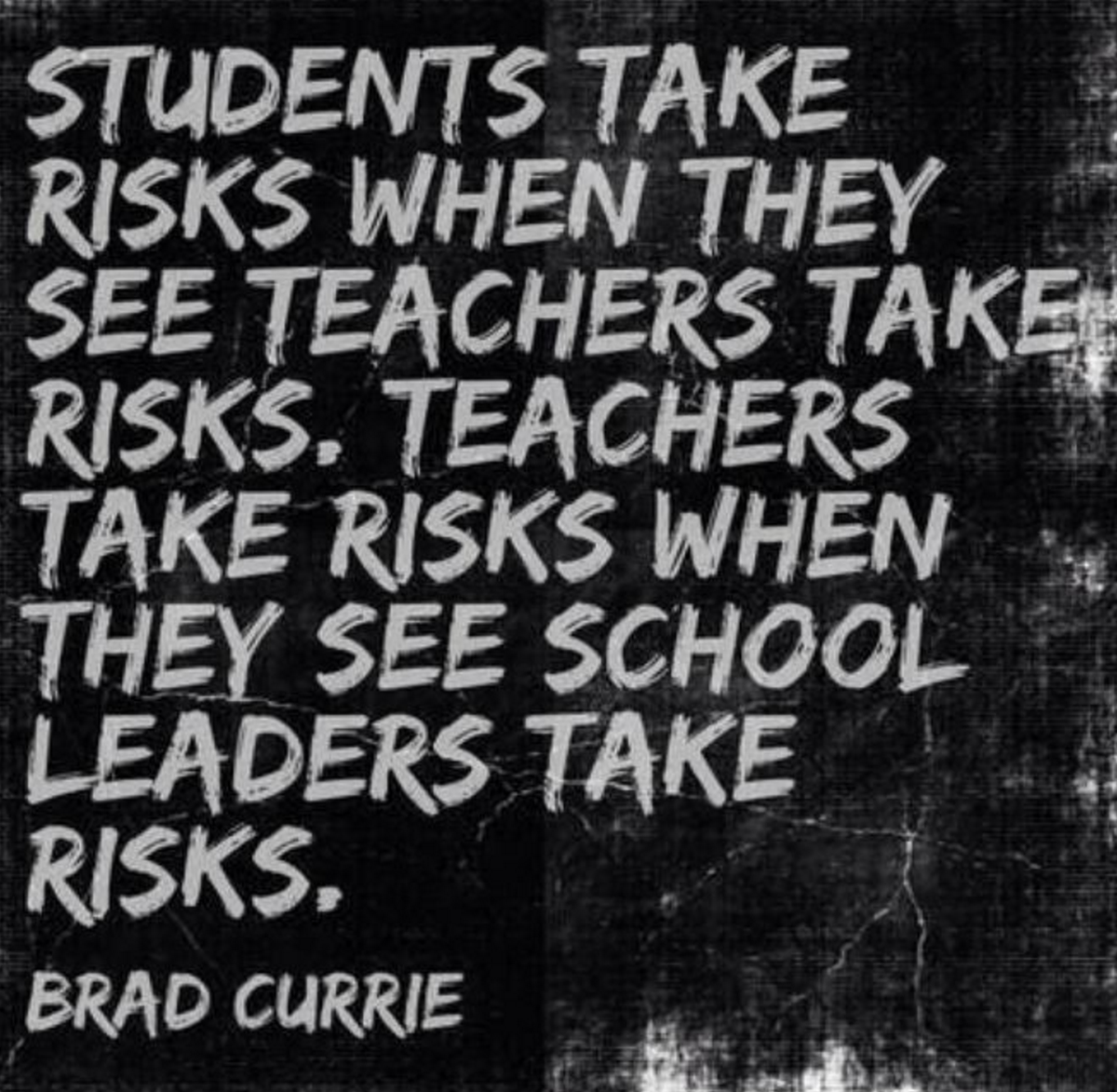A few years ago our school went through a very difficult time with technology. Nothing worked. Nothing. At least that's how everyone felt. I knew it was bad when students were hammering on stone tablets in classrooms!?!
There were several factors that created the problems we experienced, and even though I'm sort of a techie principal, I felt helpless to address all of the issues we faced. Our network was a mess. Computer labs didn't work properly. It was impossible to print anything. Our limited tech support staff was overwhelmed.
 |
| Image retrieved: http://leadkrabi.com/services/computer-consulting/ |
Thankfully, we are far past those days now. Just this past school year, we made a significant digital conversion by placing Chromebooks in the hands of each of our 800+ students. Although there were a few issues, overall our network is strong and most of the time the Chromebooks worked great. Teachers were singing the Hallelujah Chorus.
And for good reason.
Technology failure can be one of the most frustrating things a teacher can face in the classroom. It can leave you feeling helpless and embarrassed. In fact, the fear of a technology fail is one of the main reasons teachers are hesitant to try new things with technology. What if it doesn't work? What if something goes wrong? What then?
It doesn't help that in far too many schools, technology is not adequately supported. Computers are old. Networks are slow. Students don't have much access to a device except when a teacher schedules a trip to a computer lab. And just showing a video or having students comment on a blog post can be almost impossible as a result of the blocks and filters that are in place. It seems there can be so many barriers to using tech in the classroom.
Another reason some teachers don't use technology is they are afraid they will do something wrong. Technology can seem impossible and scary. Some aren't sure if they have the skills to succeed. Or they believe they will mess it up. And when your confidence is wavering and you don't feel successful, it's really hard to take risks and learn more. By the way, educators should always remember some students probably feel this way about learning reading, math, or grammar. But that's a topic for a different blog post.
Instead of seeing technology failure as failing, what if we embraced technology failure as an opportunity to learn? It's great when students see teachers modeling perseverance, flexibility, and problem-solving. All of these qualities can be on full display when something goes wrong with technology in the classroom. It's a great opportunity for the teacher to take on the role of learner. I believe we need more examples of teachers learning right alongside their students.
I mentioned earlier that our Chromebook launch this year was successful. It was definitely not a tech fail. However, I promise you there were more technology failures than ever before in our building, because students and teachers were using technology more than ever before. But what a great opportunity to teach problem-solving and perseverance. I often write about how important it is to be adaptable as a future-ready skill. Being adaptable with technology is extremely valuable in a world where technology is changing so fast and is such an essential part of how things get done.
So how do we handle the inevitable technology failures we are bound to experience? Should we just play it safe and only use technology in ways we feel most confident? Or just copy another stack worksheets instead? Absolutely not. Embrace failure. Expect it. Nothing works right all the time. Don't let problems with tech keep you from using it in your classroom.
If you get frustrated every time you have a problem with technology, you're either going to be frustrated all the time, or you'll just give up. It would be a shame if you didn't use technology because of your personal fears or preferences. It's so important for our students to have experiences using technology as a learning tool. So make up your mind before you start that technology failure is possible and prepare for how you will respond when it doesn't work right. Even though technology itself won't make your class great, it can contribute to a more relevant and effective learning environment. Ultimately, technology is awesome in the classroom where there is also an awesome teacher, like you!
Using Tech Failure as an Opportunity to Learn
Here are 11 tips for dealing with tech failure in your classroom.
1. Plan for it. Don't be surprised when tech fails. Expect it.
2. Think in advance about what could go wrong. This can help prevent some problems in the first place. It's great to test the technology in advance if possible to make sure it works.
3. Talk with your students up front about how technology sometimes fails. Explain what will happen in your class when something doesn't work. Teach students in advance the mindset you want them to have. Let them know we will find a workaround and press on. It doesn't mean the lesson is over or learning stops.
4. Enlist students to help solve the problem. The smartest person in the room is the room. Alone we may be smart, but together we are brilliant. Your students can be a great resource to help correct a tech fail.
5. Build your own technology skills so you have more knowledge to draw on. Try to overcome your fear of technology. No one really taught me how to use tech. I just click on stuff to figure out what happens. You can do this too.
6. Send for support. You may have a technology coach or technician in your building who can offer a helping hand.
7. Use Google, or YouTube, to search for answers. When I'm faced with a technology problem, I can almost always find a solution online.
8. Don't allow the limitations of technology in your school keep you from doing what you can. I mentioned how bad technology was for a while in our school. Many of our teachers still found ways to use technology as best they could. We have to do our very best to create an up-to-date classroom even if our tech isn't up-to-date.
9. Model risk-taking and problem-solving for your students. "We're going to try this to see if it works. If that doesn't work, we'll try something else. We're going to figure this out!"
10. Always have a Plan B for your lesson. If the tech doesn't work and troubleshooting doesn't result in a quick fix, it may be time to move forward with the lesson in a different way. Be adaptable. Thank anyone who tried to help fix the problem and then give clear directions about what will happen next.
11. Don't apologize. Usually tech failures just happen and aren't anyone's fault. It's Murphy's Law, right? If it's not your fault, don't apologize to your students for the problem. If you feel you must apologize when you see those sad eyes staring at you, only do it once. And then move forward.
One thing we are doing in our school to help address tech failures is empowering students. We created a student tech team to support all things related to digital learning in our school. They call themselves the SWAT Team (Students Working to Advance Technology). The group was organized last school year, and they've already provided PD to teachers on Chrome apps/extensions, held a tech night for parents to showcase how digital tools are being used in the classroom, and visited our middle school to share about our high school 1:1 program. Our goal is for this group to take on a greater role in sharing Chromebook knowledge and responding to tech failures when they occur.
Question: What's your worst technology fail? How do you respond when technology fails in your classroom or school? Are you open to taking risks and trying new technology? I would love to hear from you. Leave a comment below or respond on Twitter or Facebook.



















